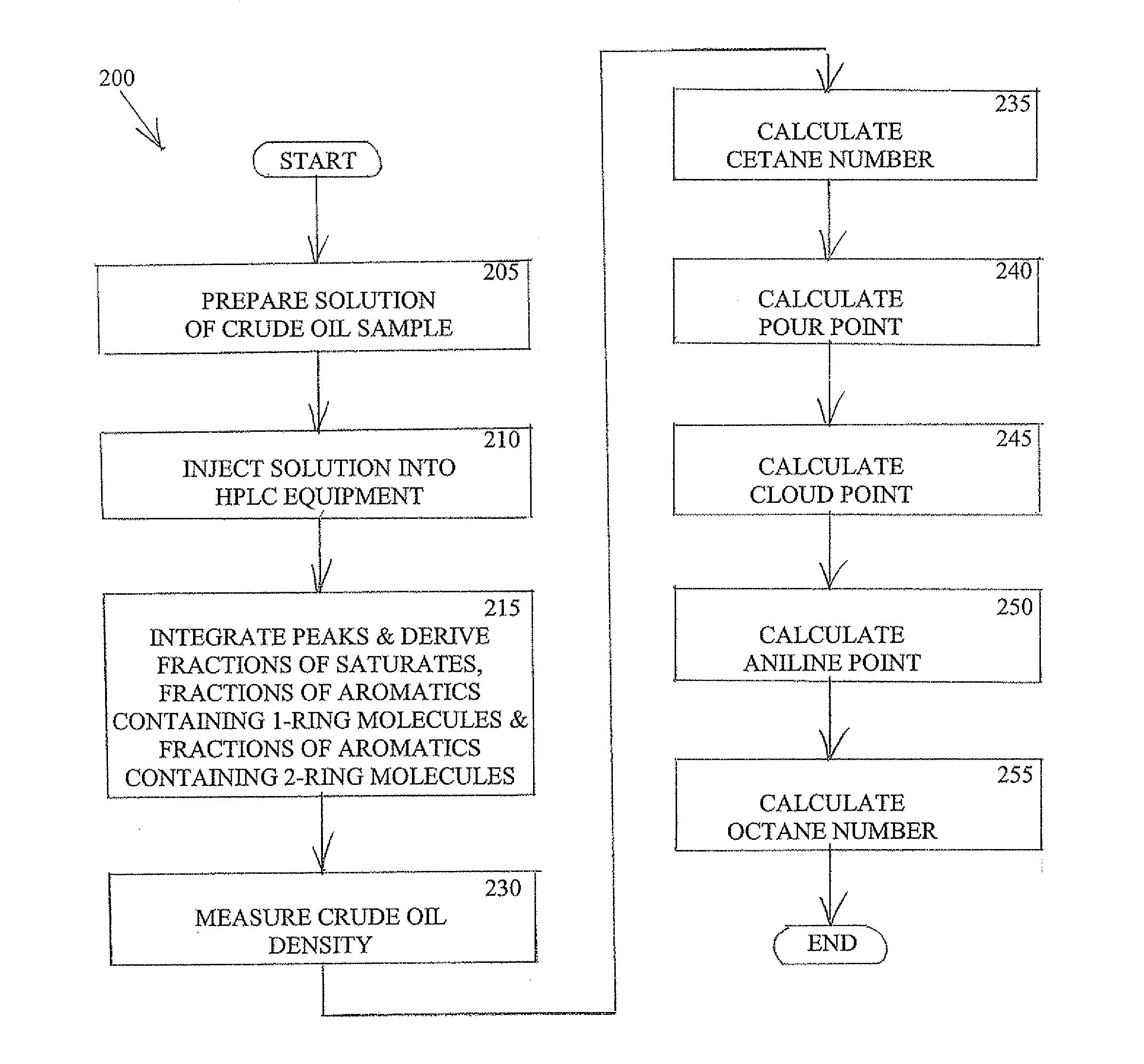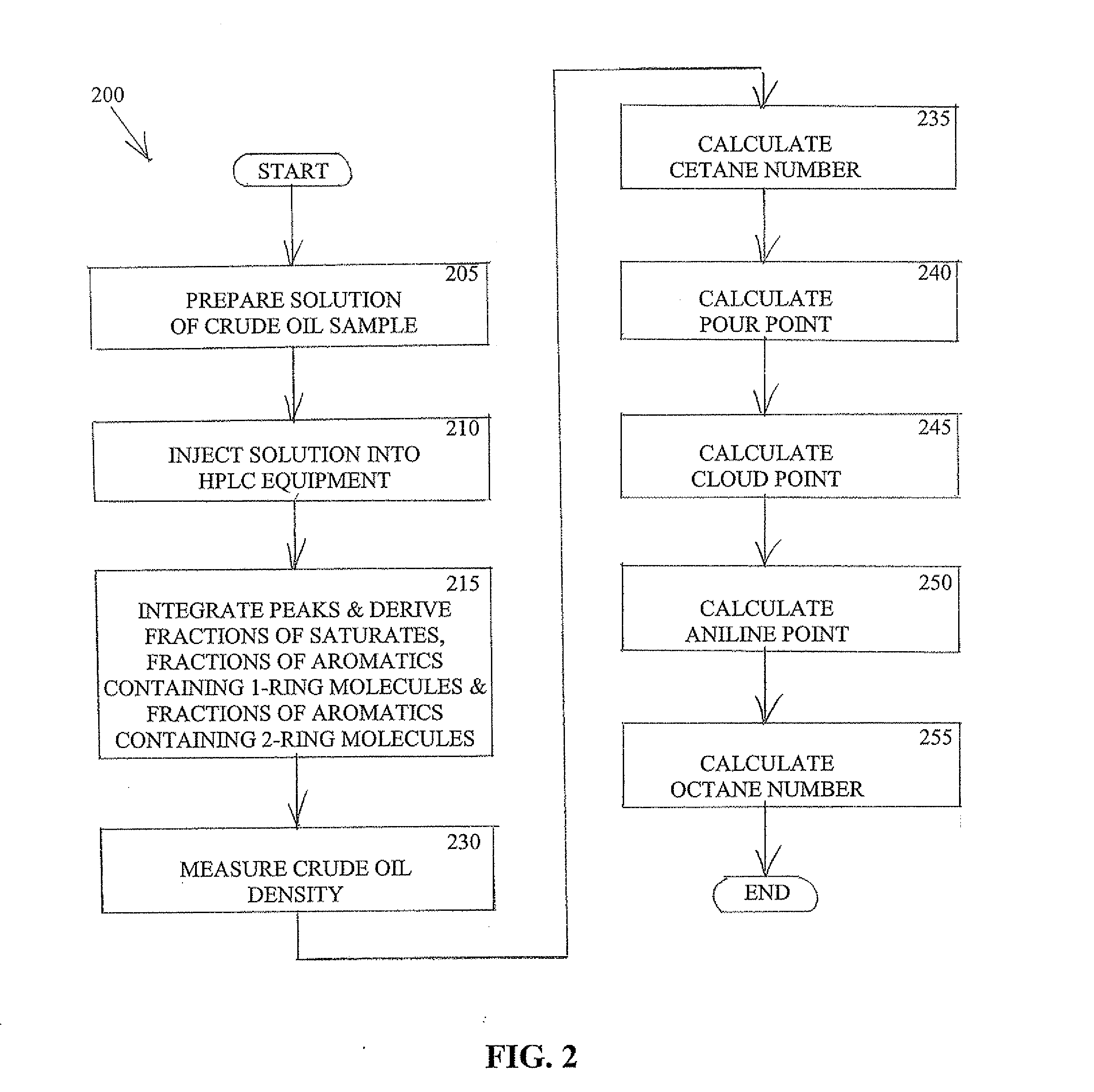Method of characterizing crude oil by high pressure liquid chromatography
- Summary
- Abstract
- Description
- Claims
- Application Information
AI Technical Summary
Benefits of technology
Problems solved by technology
Method used
Image
Examples
Embodiment Construction
[0025]Crude oil samples were prepared and analyzed by HPLC according to the method 200 described below, and illustrated in FIG. 2.
[0026]In step 205, about 100 mg of crude oil sample is dissolved in 1 mL heptane. The solution is shaken thoroughly by a Vortex Mixer and allowed to stand for 10 minutes, after which it is filtered through a 0.45 μm Millipore filter in order to remove insoluble particles.
[0027]In step 210, the filtered sample is then directly injected into the HPLC equipment, consisting of a micro vacuum degasser, binary pump, column thermostat, auto-sampler and refractive index detector. The HPLC conditions maintained for this analysis are presented in the Table 3.
TABLE 3Flow rate;0.8mL / minDetector:Refractive index detector,Optical unit temperature 30° C.Injection volume:10μLRun time:40minutesForward flush11.4minuteBack flush11.4-30minuteMobile phase:n-heptaneColumn storage:n-heptaneInjector needle wash:n-heptaneColumn:LiChrospher NH2 (250 × 4.6 mm)Column temperature:25°...
PUM
 Login to View More
Login to View More Abstract
Description
Claims
Application Information
 Login to View More
Login to View More - R&D
- Intellectual Property
- Life Sciences
- Materials
- Tech Scout
- Unparalleled Data Quality
- Higher Quality Content
- 60% Fewer Hallucinations
Browse by: Latest US Patents, China's latest patents, Technical Efficacy Thesaurus, Application Domain, Technology Topic, Popular Technical Reports.
© 2025 PatSnap. All rights reserved.Legal|Privacy policy|Modern Slavery Act Transparency Statement|Sitemap|About US| Contact US: help@patsnap.com



